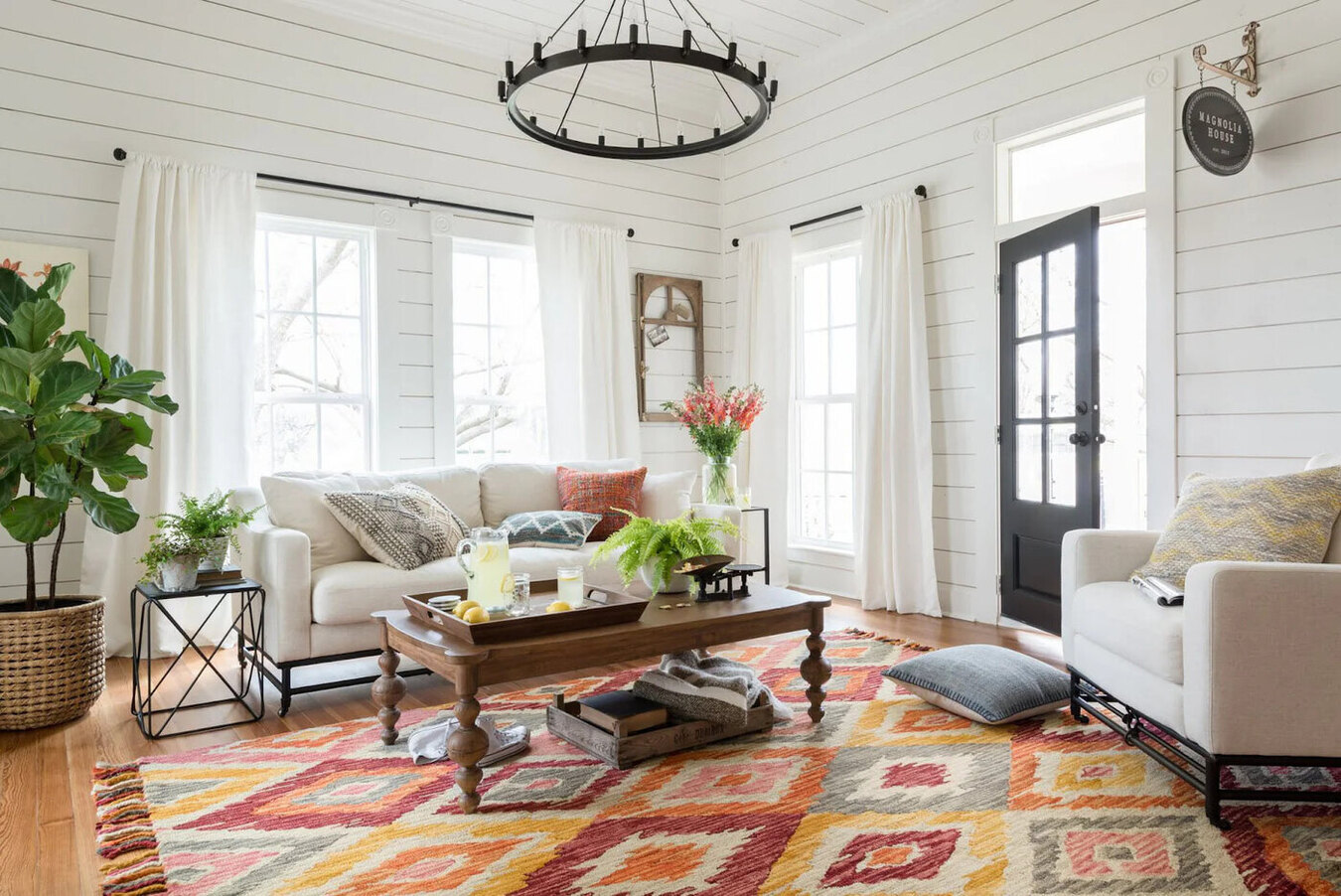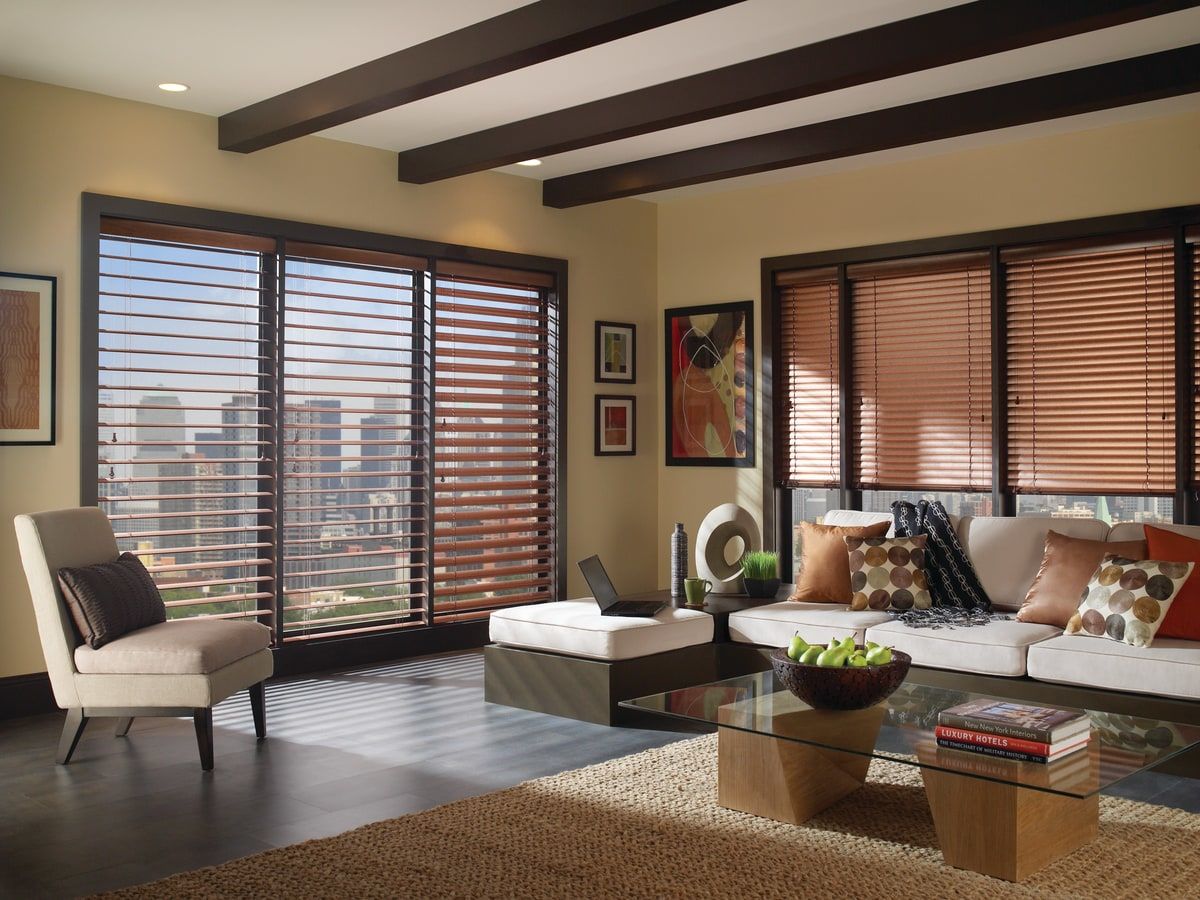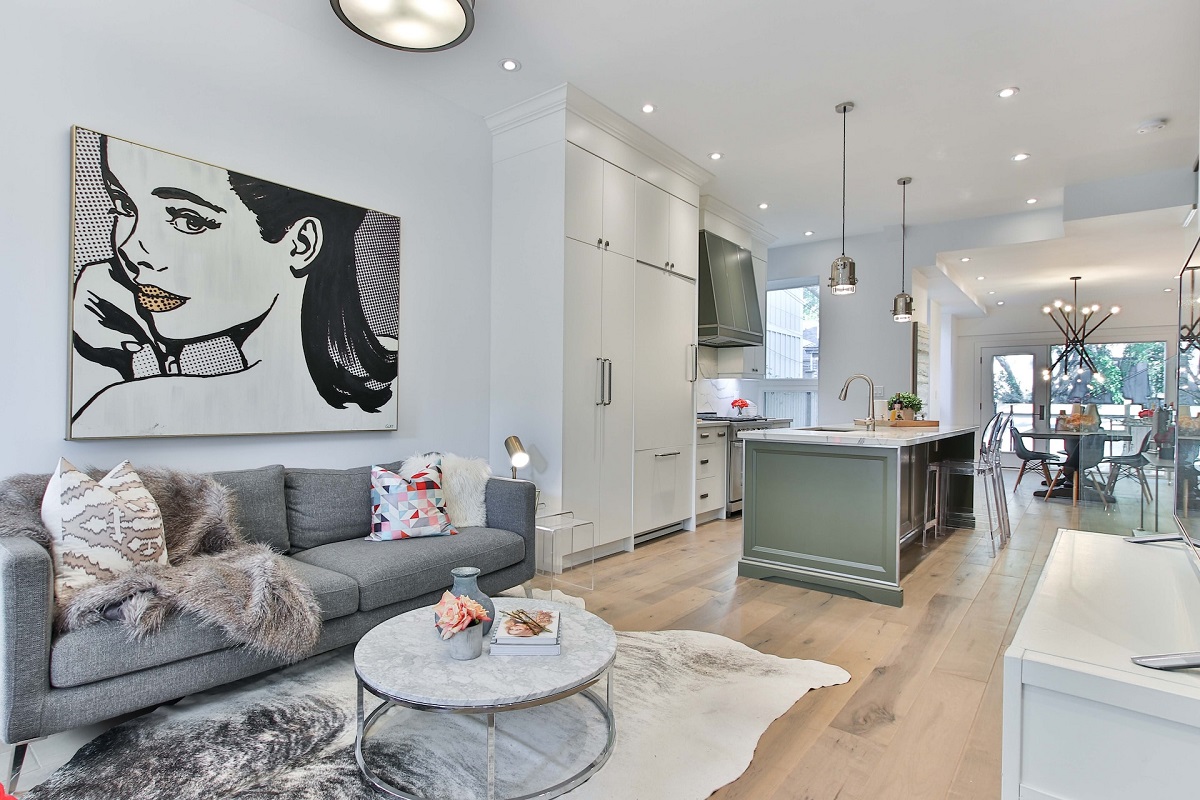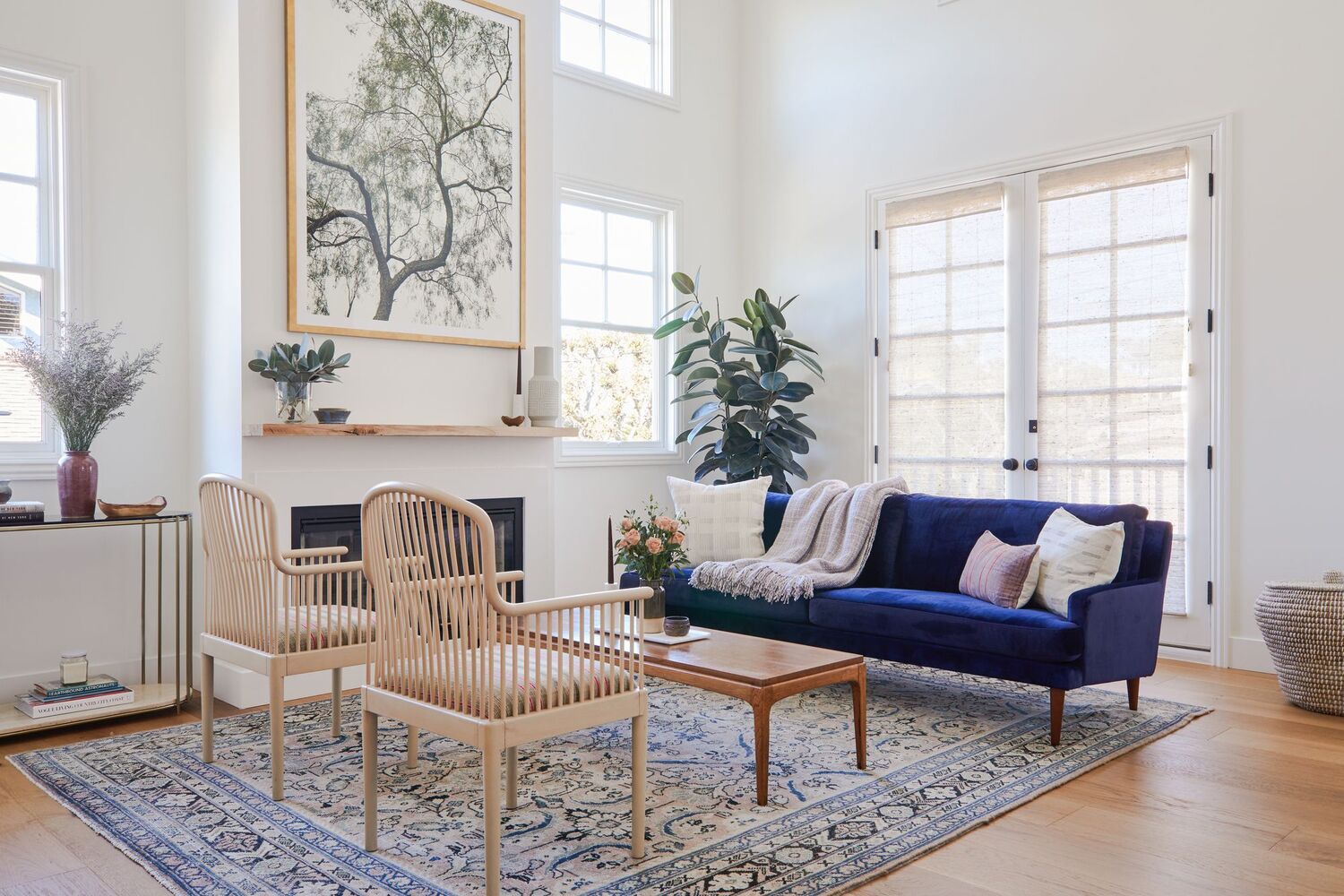Home>Interior Design>Carpet Mistakes To Avoid – According To Interior Designers


Interior Design
Carpet Mistakes To Avoid – According To Interior Designers
Modified: January 9, 2024
Avoid common carpet mistakes by following advice from interior designers. Enhance your interior design with these valuable tips for choosing the perfect carpet.
(Many of the links in this article redirect to a specific reviewed product. Your purchase of these products through affiliate links helps to generate commission for Storables.com, at no extra cost. Learn more)
Introduction
When it comes to interior decor, few things can transform a space quite like the right carpet. Not only does it add comfort and warmth, but it also brings a touch of elegance and style to any room. However, choosing the perfect carpet is not as simple as it may seem. There are various factors to consider, and even the slightest mistake can have a significant impact on the overall design and functionality of your space.
To help you navigate the world of carpeting, we’ve gathered insights from top interior designers who have seen it all. From selecting the right size to understanding the importance of color coordination, these experts share their advice on the common carpet mistakes to avoid. So, before you embark on your carpeting journey, make sure to read through these valuable tips to ensure you make informed decisions that will elevate your space to new heights.
So, what are the common carpet mistakes you should steer clear of? Let’s delve into each one in detail and learn from the experts’ advice.
Key Takeaways:
- Choose the right size carpet to create a visually appealing and well-proportioned space that complements your furniture layout and enhances the overall aesthetic of the room.
- Don’t overlook the importance of carpet padding, as it provides comfort, insulation, and protection for your carpet, ultimately enhancing its longevity and performance.
Mistake 1: Choosing the wrong size carpet
When it comes to carpeting, size matters. One of the biggest mistakes people make is selecting a carpet that is either too small or too large for the room. A carpet that is too small can make the space feel disjointed and incomplete, while a carpet that is too large can overwhelm the room and make it feel crowded.
To avoid this mistake, it’s crucial to measure your room accurately before purchasing a carpet. Take into consideration the dimensions of the room, the furniture layout, and any architectural features you want to highlight or downplay. A general rule of thumb is to leave at least 6-12 inches of space between the edge of the carpet and the walls to create a balanced and visually appealing look.
If you have an open floor plan, it’s important to consider the continuity and flow between different areas. In this case, you can use carpets to define specific zones within the larger space. However, make sure to choose carpets with complementary sizes that harmonize with each other to create a cohesive and seamless transition.
Additionally, consider the purpose of the room when selecting a carpet size. For high-traffic areas like living rooms or hallways, opt for larger carpets that can accommodate all the furniture and create a comfortable walking space. On the other hand, for smaller rooms or cozy corners, a smaller carpet can add a touch of coziness and intimacy.
By choosing the right size carpet, you can create a well-proportioned and visually appealing space that not only enhances the overall aesthetic but also provides functionality and comfort. Remember, size does matter, so take the time to measure and plan accordingly to avoid this common carpeting mistake.
[Content here]
Mistake 2: Neglecting the importance of carpet padding
When it comes to carpeting, many people overlook the crucial role that carpet padding plays in the overall comfort and longevity of their carpets. Carpet padding, also known as cushion or underlay, is the layer of material that sits underneath the carpet. It serves several important functions, including providing added comfort, insulating against noise and temperature, and protecting the carpet from wear and tear.
One of the common mistakes homeowners make is opting for thin or low-quality padding to save costs. While it may seem like a small detail, choosing the right carpet padding can make a significant difference in the overall comfort and durability of your carpets. A high-quality padding helps to absorb impact, prolonging the lifespan of the carpet and preventing premature wearing and matting.
Furthermore, carpet padding also provides insulation against noise transmission between floors, making it especially important for areas like bedrooms, apartments, or rooms with high foot traffic. Additionally, it acts as a thermal barrier, helping to maintain a consistent indoor temperature and reducing energy costs.
To avoid this mistake, it’s important to consult with your carpet supplier or professional interior designer to determine the appropriate type and thickness of padding for your specific carpet and needs. There are various types of carpet padding available, such as foam, rubber, or fiber, each with its own benefits and considerations. Factors like the type of carpet, the subfloor material, and the level of foot traffic should all be taken into account when selecting the right padding.
Investing in high-quality carpet padding may initially seem like an added expense, but it can save you money in the long run by prolonging the life of your carpet and providing added comfort and insulation. So, don’t overlook the importance of carpet padding when choosing your carpeting options. It’s an essential element that can make a significant difference in the performance and enjoyment of your space.
[Content here]
Mistake 3: Ignoring the overall style and theme of the room
When it comes to choosing the perfect carpet, it’s essential to consider the overall style and theme of the room. Many people make the mistake of ignoring this crucial aspect, resulting in a carpet that clashes with the rest of the décor and disrupts the visual harmony of the space.
To avoid this mistake, take the time to assess the existing design elements and color palette of your room. Consider the furniture, wall color, curtains, and other accessories to determine the overall style and theme. Are you going for a modern and minimalist look, a rustic and cozy feel, or a glamorous and luxurious ambiance? Understanding the style and theme will help guide your carpet selection process.
Once you have a clear vision of the room’s style, you can start considering the various carpet options that will complement and enhance the overall aesthetic. For example, for a contemporary and sleek room, consider a solid-colored or geometric-patterned carpet in neutral tones or bold contrasting shades. On the other hand, for a traditional or vintage-inspired room, a plush and patterned carpet with intricate designs can add an elegant touch.
Don’t be afraid to play with textures and materials as well. Carpets come in a variety of options such as wool, synthetic fibers, or natural materials like sisal or jute. Each material offers a different look and feel, so choose one that aligns with the style and mood you’re aiming for.
Remember, the carpet should harmonize with the rest of the room’s elements rather than overpowering or clashing with them. It should seamlessly blend in with the overall design and enhance the desired ambiance. Take your time to explore different options and consider consulting with an interior designer for their expertise in selecting carpets that align with your style and theme.
By paying attention to the overall style and theme of the room, you can ensure that your carpet choice becomes an integral part of the cohesive and visually appealing design. Don’t underestimate the power of a well-coordinated carpet in transforming a space and creating a harmonious atmosphere.
[Content here]
Mistake 4: Opting for a carpet that is difficult to clean or maintain
When selecting a carpet for your home, it’s crucial to consider the level of maintenance and cleaning required to keep it looking its best. Unfortunately, many people make the mistake of choosing a carpet without fully understanding the cleaning and maintenance efforts it demands, leading to frustration and even premature deterioration of the carpet.
To avoid this mistake, it’s important to consider your lifestyle, routine, and the specific needs of your household. For example, if you have young children or pets, it’s wise to choose a carpet that is stain-resistant and easy to clean. Carpets made from synthetic fibers, such as nylon or polyester, tend to be more resistant to stains and spills compared to natural fibers like wool.
Additionally, consider the maintenance requirements of the carpet. Some carpets may require regular vacuuming and occasional deep cleaning, while others may be more low-maintenance and easier to clean. It’s crucial to understand the cleaning instructions provided by the manufacturer and determine if you’re willing to invest the time and effort required to keep the carpet in good condition.
Another aspect to consider is the specific room where the carpet will be installed. High-traffic areas like entryways, living rooms, and hallways may require carpets that are more durable and stain-resistant. On the other hand, low-traffic areas like bedrooms or formal dining rooms may allow for more delicate and luxurious carpet choices.
It’s also worth considering the color and pattern of the carpet when it comes to maintenance. While lighter-colored carpets can brighten a space and create an airy ambiance, they may require more frequent cleaning to keep them looking fresh. Darker-colored carpets, on the other hand, may better hide stains and dirt but can show more lint and pet hair.
Taking the time to research and understand the maintenance requirements of different carpet options can save you time, money, and frustration in the long run. Don’t hesitate to consult with professionals or seek advice from carpet suppliers to ensure you make an informed decision based on your cleaning preferences and lifestyle.
By choosing a carpet that is easy to clean and maintain, you can enjoy a beautiful and long-lasting carpet that enhances the overall aesthetic of your space without the burden of excessive cleaning and upkeep.
[Content here]
When choosing a carpet, consider the traffic in the room. For high-traffic areas, opt for a durable and stain-resistant material to ensure longevity and easy maintenance.
Mistake 5: Forgetting about the traffic patterns in the room
When selecting a carpet, it’s important to consider the traffic patterns within the room. Traffic patterns refer to the areas of the room that experience the most foot traffic, such as entryways, hallways, or the path from one room to another. Unfortunately, many people forget to take this into account and end up with carpets that show signs of wear and tear in these high-traffic areas.
To avoid this mistake, carefully analyze the flow of foot traffic within the room. Consider the natural pathways that people take when entering, exiting, and moving around the space. These areas will require a durable and resilient carpet that can withstand the constant foot traffic without showing signs of wear too quickly.
In high-traffic areas, it may be wise to opt for carpets made from materials known for their durability, such as nylon or polyester. These synthetic fibers are more resistant to crushing and can better withstand the impact of foot traffic. Look for carpets with a higher pile density or shorter pile height, as they tend to be more resilient and maintain their appearance over time.
Another consideration is the use of area rugs or carpet runners in high-traffic areas. These can provide an extra layer of protection for the underlying carpet, preventing excessive wear and tear. Additionally, they can add a touch of style and interest to these areas while allowing for easier maintenance, as they can be removed and cleaned separately if necessary.
It’s also important to periodically rotate furniture or rearrange the layout of the room to distribute the foot traffic more evenly. This helps prevent specific areas of the carpet from experiencing constant pressure, which can lead to uneven wear and matting.
By taking into account the traffic patterns within the room and selecting a carpet that can withstand the demands of these areas, you can ensure that your carpet remains in good condition and retains its beauty for years to come.
[Content here]
Mistake 6: Overlooking the importance of color and pattern coordination
When it comes to carpet selection, one common mistake is overlooking the importance of color and pattern coordination with the rest of the room. The color and pattern of the carpet play a significant role in the overall aesthetic of the space, and ignoring this crucial aspect can result in a design that feels disjointed or overwhelming.
To avoid this mistake, it’s essential to consider the existing color palette and design elements in the room. Take into account the wall colors, furniture, curtains, and other accessories when choosing the color and pattern for your carpet. The carpet should harmonize with these elements, complementing the overall theme and creating a cohesive look.
If your room already has bold and vibrant colors, consider opting for a neutral-colored carpet that provides a visual balance and allows the other elements to shine. Alternatively, if your room leans towards a more monochromatic or neutral palette, a patterned or textured carpet can add visual interest and playfulness.
The scale of the pattern is also important. If you have a room with small furniture or minimal decor, a small-scale pattern can create a sense of visual depth and add interest to the space. On the other hand, in larger rooms or those with bigger furniture pieces, a larger-scale pattern can create a statement and become a focal point.
Additionally, consider the lighting in the room. Natural light can affect how colors appear, so it’s important to test out carpet samples in different lighting conditions to ensure that the colors complement each other regardless of the time of day.
It’s worth noting that trends come and go, so it’s essential to choose a carpet that aligns with your personal style and preferences rather than simply following the latest fad. Consider the longevity of the design and choose a color and pattern that you will still love for years to come.
Don’t hesitate to seek advice from professional interior designers or carpet suppliers who have expertise in color and pattern coordination. They can provide valuable insights and suggest options that you may not have considered.
By giving careful thought to color and pattern coordination, you can create a visually cohesive and aesthetically pleasing space that exudes style and harmony.
[Content here]
Mistake 7: Failing to consider the lifestyle and needs of the occupants
One of the most significant mistakes people make when choosing a carpet is overlooking the lifestyle and specific needs of the occupants. Each household has unique requirements and considerations that should be taken into account to ensure the carpet not only looks great but also meets practical and functional needs.
Consider the following factors when selecting a carpet:
1. Pets: If you have pets, especially cats or dogs with long nails, it’s crucial to choose a carpet that is resistant to scratching and staining. Carpets with a low pile or loop construction are generally more resistant to damage and easier to clean. Additionally, consider opting for patterned carpets that can better camouflage any accidents or shedding.
2. Allergies: For individuals with allergies or asthma, selecting a hypoallergenic and easy-to-clean carpet is vital. Look for carpets made from organic or synthetic fibers that are less likely to trap allergens. Regular vacuuming and professional cleaning can further minimize allergens in the carpet.
3. Children: Families with young children need to consider a carpet that can withstand spills, stains, and heavy playtime. Stain-resistant carpets with good durability are ideal for child-friendly spaces. Additionally, carpets with vibrant colors or patterns can hide small stains or wear and tear, making them more forgiving for busy households.
4. Elderly or mobility-challenged individuals: For those with mobility concerns, it’s important to choose a carpet with a low pile height to minimize trip hazards. Non-slip padding can also be beneficial, providing extra stability and preventing accidents.
5. Sunlight exposure: Consider the amount of sunlight the room receives when selecting a carpet. Direct sunlight can cause carpet colors to fade over time, so opting for fade-resistant carpets or using window coverings to block excessive sunlight can help maintain the carpet’s appearance.
6. Maintenance preferences: Consider your willingness and ability to maintain the carpet regularly. Some carpets require more frequent vacuuming, professional cleaning, or spot treatments. If you prefer a low-maintenance option, choose a carpet that is easy to clean and doesn’t require extensive upkeep.
By considering the lifestyle and needs of the occupants, you can choose a carpet that not only enhances the aesthetic of the space but also provides practicality, durability, and comfort for all its users.
[Content here]
Mistake 8: Not getting professional help or advice
Choosing the perfect carpet for your space can be a challenging and overwhelming task, especially if you don’t have prior knowledge or experience in interior design. One of the biggest mistakes people make is not seeking professional help or advice when it comes to selecting the right carpet.
Interior designers and carpet experts have a wealth of knowledge and experience in navigating the vast array of carpet options available in the market. They can provide valuable insights, recommendations, and guidance based on your specific needs, budget, and style preferences. Their expertise can help you avoid costly mistakes and ensure that you make informed decisions that align with your vision for the space.
Here are a few ways in which professional help or advice can benefit you:
1. Expertise in carpet selection: Interior designers and carpet specialists have an in-depth understanding of different carpet materials, styles, and trends. They can guide you in choosing the right type of carpet that suits your lifestyle, budget, and design goals.
2. Space planning: Professionals can assist in determining the appropriate size and shape of the carpet for your room. They can take into account the furniture layout, traffic flow, and architectural features to help you make the best use of the carpet and create a harmonious arrangement.
3. Color coordination: Interior designers have a keen eye for color and can help you select a carpet color that complements the existing design elements in the room. They can provide guidance on creating a cohesive color scheme or introduce bold statements that enhance the overall aesthetic.
4. Customization options: Professional help can introduce you to customization options that you may not be aware of. They can advise on custom carpet designs, patterns, and even personalized touches that can make your space truly unique and reflective of your style.
5. Budget optimization: While professional assistance may come with a cost, it can actually save you money in the long run. Experts can help you make informed decisions that align with your budget, preventing you from overspending on unnecessary features or low-quality options that may need to be replaced soon.
Remember that seeking professional help doesn’t mean relinquishing control over your design choices. Rather, it’s about leveraging the expertise of professionals to confidently make decisions that will yield the best results for your space.
By engaging with professionals who understand the intricacies of carpeting, you can avoid common mistakes and create a beautifully designed space that reflects your style, meets your needs, and stands the test of time.
[Content here]
Conclusion
Choosing the perfect carpet for your space requires careful consideration and attention to detail. By avoiding common carpet mistakes, you can create a visually stunning and functional space that reflects your style and meets your practical needs.
First and foremost, remember to select the right size carpet that fits the room and furniture layout, ensuring a well-proportioned and visually appealing space. Don’t forget the importance of carpet padding, as it provides comfort, insulation, and protection for your carpet.
Consider the overall style and theme of the room to ensure that the carpet harmonizes with the existing design elements. Pay attention to color and pattern coordination, taking into account lighting and the desired ambiance.
It’s crucial to choose a carpet that is easy to clean and maintain, considering your lifestyle and the specific needs of the occupants. Factor in the traffic patterns within the room to select a durable carpet that can withstand the demands of high-foot-traffic areas.
Lastly, don’t hesitate to seek professional help or advice. Interior designers and carpet specialists can provide valuable insights, expertise, and guidance to make the best carpet selection for your space and budget.
By avoiding these common carpet mistakes and making informed decisions, you can create a beautiful, comfortable, and long-lasting carpeted space that enhances your overall interior design.
Remember, a carpet is more than just a floor covering – it is a powerful design element that can transform the look and feel of your room. So take the time to research, explore options, and consider professional advice to ensure that your carpet choice elevates your space to new heights and brings you years of comfort and enjoyment.
Frequently Asked Questions about Carpet Mistakes To Avoid – According To Interior Designers
Was this page helpful?
At Storables.com, we guarantee accurate and reliable information. Our content, validated by Expert Board Contributors, is crafted following stringent Editorial Policies. We're committed to providing you with well-researched, expert-backed insights for all your informational needs.














0 thoughts on “Carpet Mistakes To Avoid – According To Interior Designers”